Denemek ALTIN - Özgür
Unique feeding system requires less management
Stockfarm
|January 2020
When AFGRI Animal Feeds brought the Kempen feeding system for dairy cows to South Africa in 2009, it was aimed mainly at farmers who use total mixed rations (TMRs). While it worked very well initially, AFGRI later learned an expensive lesson.

According to SP Els, national ruminant specialist at AFGRI Animal Feeds, the main reason for this had to do with the quality of roughage and management. He believes customers completely underestimated the level of management the system requires.
“Customers gradually rejected the system. Some of their reasons included a reduction in butterfat, acidosis and bloating. This caused a decline in production and losses,” he says.
Success on grazing
In contrast, some customers found the system to be quite successful when used on grazing. Unfortunately, the so-called ‘Kempen pellets’ eventually became too expensive. This can be attributed to the declining milk price in 2017 and rising feed costs. Many customers have since stopped using the system.
SP believes these setbacks do not discount the value of the system when used under the right conditions. “The system definitely has merit, especially in grazing areas where farmers want to increase their quotas from February to May. The Kempen system can increase production by 15 to 20%. The system is also extremely valuable for farmers who experience a cyclical grazing and roughage shortage.”
In addition, it can successfully remedy a negative energy balance, which is a constant challenge on any dairy farm. This increases dry matter intake at the start of lactation. Cows, therefore, remain in good condition throughout lactation. This improved energy balance, combined with a more stable body condition, leads to improved cow health and fertility.
“Trials conducted in the Western Cape show that cows do very well on the system, especially during the first 30 to 40 days of lactation. Afterward, they can be moved back onto the normal feeding system. This approach works equally well in a TMR system and on grazing,” he explains.
Bu hikaye Stockfarm dergisinin January 2020 baskısından alınmıştır.
Binlerce özenle seçilmiş premium hikayeye ve 9.000'den fazla dergi ve gazeteye erişmek için Magzter GOLD'a abone olun.
Zaten abone misiniz? Oturum aç
Stockfarm'den DAHA FAZLA HİKAYE
Stockfarm
Trust and muffins lead the way
In any business, communicating in silos is the main cause of issues among managers. With only three of us managing things, myself on sheep, Gert on vehicles and Mbali on payments, breaking through our silos is easy. Twice a week we hold short morning meetings to report progress and problems towards our goal of turning grass into sheep for profit.
2 mins
December 2025
Stockfarm
Santa's new team
Last December, we warned Santa Claus of the perils of visiting South Africa with his team of reindeer. We cautioned him about the biological hazards his reindeer might bring into the country, and the import tariff issues he might encounter when trying to bring in all those gifts. We also elaborated on the heat and other environmental challenges his team might face. But we also told him about our friendly farmers and the braais he might be invited to, complete with a beverage of his choice.
3 mins
December 2025
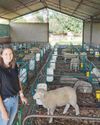
Stockfarm
The effect of iucerne hay quaiiiy on feedlot lambs
Lucerne hay is one of the most widely used roughage sources for ruminant diets, largely due to its reputation for providing high-quality nutrition. Important considerations for producers who use lucerne hay in their feed programme include assessing the true value of lucerne hay, determining the most suitable grade for specific feeding purposes, considering its cost, and balancing these factors against optimal feedlot performance.
3 mins
December 2025
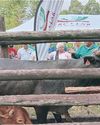
Stockfarm
Imfuyo-yami Ingumcebo Wami: Livestock as a legacy of wealth and wisdom
In the heart of KwaZulu-Natal, under the warm sun and the watchful gaze of the rolling hills, the Hlawini Community Hall in Umfolozi Local Municipality came alive with the spirit of unity, learning, and tradition. The occasion? The Umfolozi Livestock Farmers' Information Day, held under the banner of the Agricultural Research Council's (ARC) Kaonafatso ya Dikgomo (KyD) project, a national an initiative aimed at empowering communal livestock farmers through knowledge, technology, and sustainable practices.
3 mins
December 2025
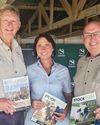
Stockfarm
Celebrating the 2025 Komga Agricultural Show
This year's Komga Agricultural Show, energised by the arrival of summer and filled with festive stalls, was a hive of activity. The grounds came alive with live music, a poultry exhibition, the familiar sounds of cattle and sheep in the pens, displays of horsemanship, and top-quality technology and implements on show.
2 mins
December 2025
Stockfarm
DSA reaches new milestone on the road to excellence
The Dairy Standard Agency (DSA) has enjoyed an exceptional 2025 so far, marking two major achievements that underscore its ongoing pursuit of excellence.
3 mins
December 2025
Stockfarm
Samic: Protector of red meat quality
If you thought the South African Meat Industry Company (Samic) is just about carcass competitions, think again. Fact is, the company plays a pivotal role in South Africa's meat supply chain, upholding rigorous standards of quality, safety, and transparency from the farm gate to the plate.
3 mins
December 2025
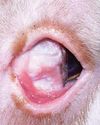
Stockfarm
Wireworm management in small stock
Years of indiscriminate dosing have eliminated weaker wireworms, allowing resistant populations to dominate and spread through flocks. Wireworms typically hatch following good rains and warm nights. When larvae move up the green grass, they are ingested by grazing sheep. About 20 days later, the worms begin sucking blood, leading to anaemia and, in severe cases, death.
2 mins
December 2025

Stockfarm
Back to basics at the 2025 LRF Stockman School
The 17th Annual LRF Stockman School, hosted by the Livestock Registering Federation (LRF), kicked off with great enthusiasm at the Aldam Holiday Resort and Conference Centre in the Free State. Held over three days, the event brought together leading experts from a range of fields who met everyone's expectations by addressing relevant and timely topics head-on.
7 mins
December 2025
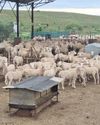
Stockfarm
Vertical gains in the lambing pen: It's not just about the numbers
In a world where rising input costs and increasing consumer demands play a decisive role, it has become more important than ever for red meat producers to raise lambs that not only benefit the producer but also add value throughout the entire supply chain.
4 mins
December 2025
Translate
Change font size

